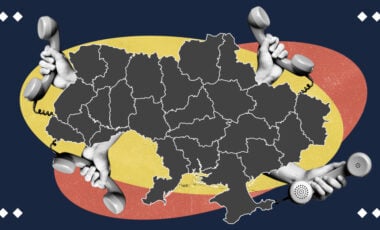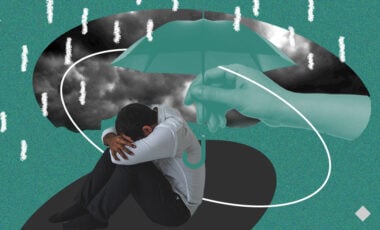The Ukrainian solution or the paradox of implementing innovations for the decarbonization of the transport industry

In a few hours, Ukrainians demonstrated to the whole world how quickly the nation rallied, rejecting political, gender, social, linguistic, age, geographical, and all other obstacles. This unprecedented outburst of patriotic empathy shocked the whole world. If we can maintain this level of support for solving more important issues during the reconstruction of Ukraine, then what would take years will be solved in months.
Unfortunately, ecology and the destructive actions of the enemy in relation to Ukraine's environment did not receive adequate coverage in the mass media, almost until the barbaric destruction of the Kakhovska HPP. However, until this moment, Ukrainian ecologists have recorded more than a thousand environmental crimes as of May of this year, the consequences of which we may not feel, but the next generation of Ukrainians will feel them.
EVERYTHING IS WORSE THAN WE THINK
There is a danger that has been denied for years and that has forced 95% of the world's countries to unite to fight and prevent its consequences. We are talking about carbon emissions into the atmosphere.
During the period of independence, industry remained the source of emissions in Ukraine. However, after the attack on our state, many factories, small and medium-sized enterprises ended up in temporarily occupied territories, or were destroyed during hostilities. The rest, according to the latest data, can hardly work at more than 40-50% of their own capacity. Thus, transport became the main source of emissions in Ukraine. And this is not news, as recently as 2019, Ukraine was recognized as dangerous for living due to exhaust gases and ranked 109th out of 180 countries in terms of the number of harmful emissions from cars.
EMISSIONS FROM TRANSPORT
Researchers emphasize that transport is the only industry in which the number of hazardous emissions increases annually. That is, increasing the number of electric cars, improving the environmental performance of internal combustion engines (ICE), government regulation and control do not produce results.
A simple example. Heavy-duty vehicles (HDVs) account for 27% of climate emissions from road transport in Europe, while they account for only 2% of vehicles on the road. Trucks and buses emit four times more CO2 than all flights within the EU. Powered by diesel engines, they increase global warming and pollute the air, causing serious illness and premature death.
INTERNATIONAL PRACTICE
Spain. 500 Euro fine and ban on entry to Barcelona and Madrid if you are the owner of a car with a gasoline engine aged 20 years and 15 if the engine is diesel.
France. Restrictions on the movement of trucks of Euro 3 and 4 standards, after 8 pm, their movement is prohibited throughout the country.
In many European cities, there is a complete ban on the passage of internal combustion engines on central streets. And, as a result, a law was adopted regarding the ban on the sale of gasoline and diesel cars in 2035. Despite the phase-out of internal combustion engine (ICE) vehicles in 2035, numerous highly polluting internal combustion engine vehicles will be sold in Europe before the phase-out.
There are many examples, emissions from cars have become the most widespread problem on all continents.
LOOKING FOR A SOLUTION
Two main issuers: industry and transport. However, the industry shows an annual decrease in the number of emissions, investments amount to tens of billions. The media, almost every week, reports on new global warming solutions for world industry. With transport, the opposite is true, there is an impression that there are no solutions to reduce emissions from existing transport at all, the market for decarbonization of internal combustion engines is considered dead, the industry is waiting for enough electric cars to appear in the world. The world does not seem to notice the hundreds of millions of cars with internal combustion engines on the secondary market.
You don't need to be a psychic to understand that a huge number of such cars will end up in countries with high corruption and weak control over environmental regulations. Thus, all actions, attempts and efforts to reach zero will be in vain. In addition, no law specifies and does not limit the sale and manufacture of special vehicles with internal combustion engine technology. Tractors, minivans, small and medium-sized commercial vehicles, passenger, city, military, construction, summer, sea, railway and agricultural vehicles.
Businesses are beginning to realize that they can change their cars to electric cars in an instant. Many questions remain that need immediate resolution. The cost of new equipment, the infrastructure for international transportation, and the time required to charge the battery.
DECISIONS AND PREJUDICE
The most influential environmental organization in Europe, Transport and Environment, calculated that taking into account CO2 emissions during the manufacture of an electric car (body, plastic elements, battery, etc.), an electric car is three times more efficient and safer than cars with an internal combustion engine. It is not surprising that electric cars are considered as the priority to achieve zero emissions.
However, there are other technologies on the market capable of reducing emissions. At the beginning of June of this year, we presented our solution for reducing emissions and saving fuel FuelWell in Silicon Valley, at the event Startup Grind 2023. It is additional equipment for internal combustion engines, the installation of which takes about the same time as changing the oil filter in a car. It is important that we do not interfere with the design of the engine in any way.
For comparison, we have provided our own calculations. An electric car costs approximately 35,000 Euros and has an annual emission saving rate of approximately 11.5 tons. For the same amount, it is possible to equip 100 diesel engines with our device, in this case, we will be able to prevent 132 tons of emissions per year. Add to this the fuel savings of 10+%. Even for the owner of one family car with a volume of up to 2 liters, the amount of savings will be equal to a week's vacation with the family at sea (for a year). And imagine that your fleet includes a hundred units of equipment. But these are all words. Of course, these conclusions were preceded by more than 70 pilot projects, during which we received official research reports from companies whose fleets consist of the most famous transport brands: Renault, MANN, Volvo, Mercedes, John Deer, JCB and others. We have even tested the FuelWell solution on helicopter and ship engines.
The first problem we faced was that even 15 years ago, there was a huge amount of pseudo technology on the market that promised fuel savings, but did not work at all. In addition to biased attitudes, we have repeatedly witnessed direct sabotage on the ground during fuel efficiency testing. Many middle managers who work directly with the equipment were not happy that the amount of fuel was coming under tight control.
It was difficult to break stereotypes and the ice of skepticism, but step by step, we still moved forward. But the problem with innovative products is that they are innovative. A paradoxical pun.
We were lucky in that the Ukrainian startup fund and the minister of digital transformation were personally interested in the project. The solution received a dual-purpose grant. Summarizing the situation around, it should be noted that the market situation of decarbonization is on hold, investors show cautious interest, but it seems that most expect that someone will take the courage, and others will already join, as soon as the project demonstrates the first successes.
Well, the second and more painful moment is the war, the attack on our country. Many foreign stars and opinion leaders come to us to show their support and solidarity, but Western investors, even companies with large venture portfolios, are in no hurry to invest in Ukrainian hardware products.
However, in no case do we get upset and chew on our work, and thanks to the support of the state and international partners, we were able to present Ukrainian development in the United States, Brazil and Germany. We are sure that Ukrainian technology is able to significantly improve the situation on the secondary car market and significantly reduce the amount of emissions not only of carbon, but also of other no less dangerous chemical compounds, such as CO, NOX and PM.


















































